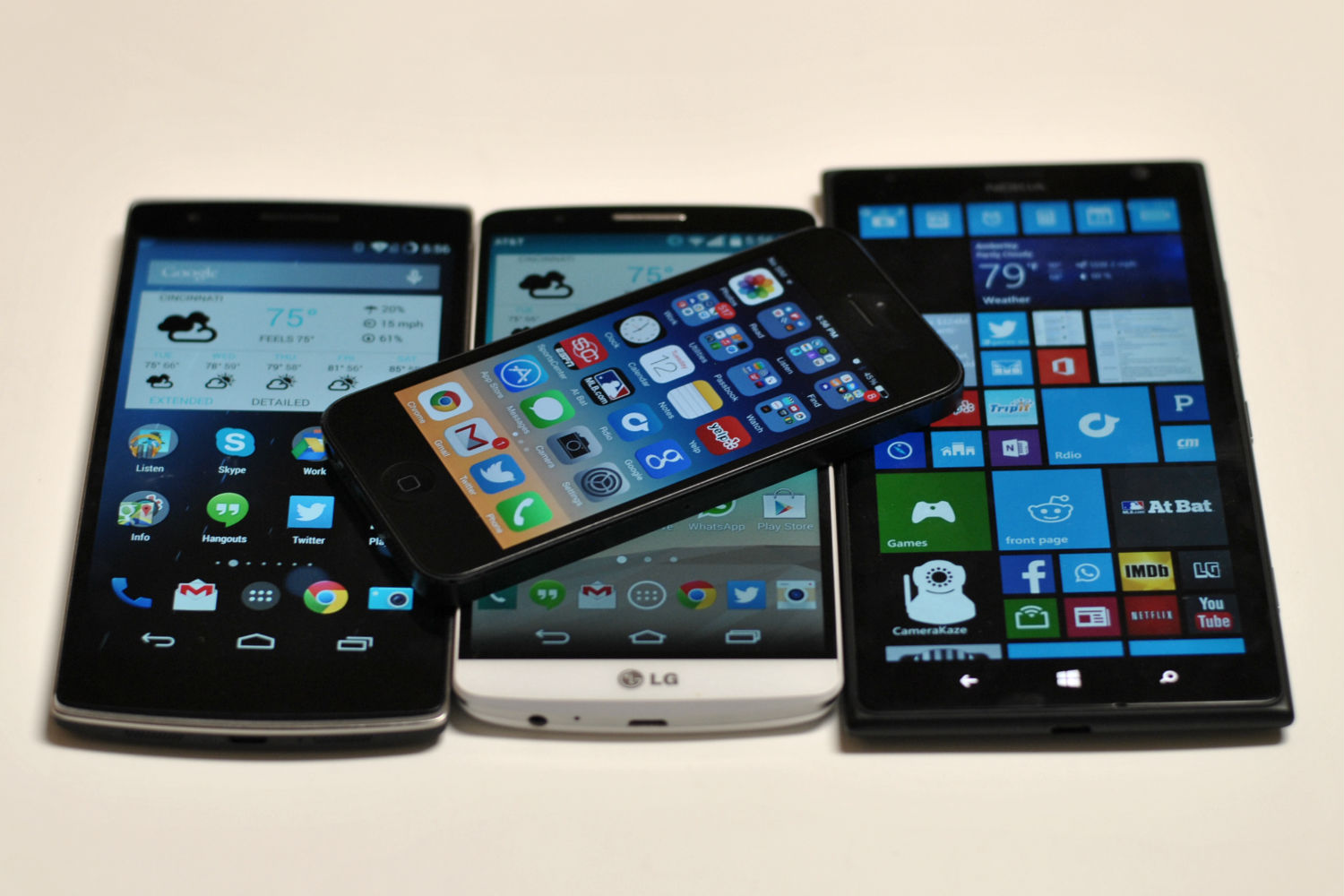
Though I’ve always understood the appeal of oversized smartphones, I’ve never spent as much time with them as I have over the last three months.
In the course of reviewing Windows Phone 8.1 (on a Nokia Lumia 1520), the OnePlus One and the LG G3, almost all of my smartphone use since mid-May has been on screens measuring 5.5 inches or larger.
The experience has been transformative enough that I’m not looking forward to reactivating my personal handsets, an original HTC One (4.7 inches) and an iPhone 5 (4 inches). Painful as it is to say — mostly because of the grating nomenclature — I’ve become addicted to phablets.
Basically, I’m living the trend in which my smartphone replaces much of what I used to do on a tablet. When I want to glance at my e-mail, scroll through Twitter or look at some funny GIFs on Reddit, it takes less time to pull out my phone than it does to look for my iPad or wake up my Surface Pro 3. And unlike those larger devices, I can use my phone with one hand and stash it back in my pocket to carry around the house.
This isn’t a new trend, or one that’s unique to extra large phones. Studies have shown that most teens and young adults rely largely on their phones for Internet use, and industry sales figures show that tablet sales are stalling while smartphones keep climbing. Meanwhile, as the speed and display technology of smartphones has improved, displacing the tablet has gotten easier. (In an especially prescient piece from 2010, Brian Lam had already ditched his less-than-year-old iPad for the iPhone 4 and its crisp Retina display.)
Oversized phones have amplified this phenomenon, or at least made it more sensible to me. The main reason is obvious: The bigger screen feels like less of a compromise for reading, watching videos and playing games. But just as importantly, nearly every phablet I’ve used has a humongous battery inside, allowing me breeze through a day of heavy use with plenty of juice in the tank. Always having an Internet connection at no extra charge — even if Wi-Fi is unavailable — helps as well.
The biggest drawback with larger phones is that they’re harder to use with one hand, but improvements in hardware and software make this less of a problem than it used to be. The LG G3’s narrow bezels make it easier to reach across the device with your thumb. It also uses on-screen buttons for Home, Back and Recent apps, so your fingers don’t have to travel off the screen. When you’re watching a video or playing a game, these buttons fade out of view until you swipe them onto the screen again. Windows Phone has its own clever trick: Because most apps have all their menu buttons on the bottom of the screen, you rarely have to reach all the way to the top, out of thumb range.
The other issue is that these phones tend to leave a larger impression in your pocket, but I think that’s more of a psychological problem than a practical one. A lot of people have asked me how I could possibly carry an oversized phone like the Lumia 1520, but I’ve yet to wear a pair of jeans in which my phone won’t fit. Most of the time, I don’t even think about it.
All of these factors have in turn primed me for the rumored 5.5-inch iPhone, even with a 4.7-inch iPhone widely expected to launch in September. I don’t know whether it’s going to happen — there’s still a lot of conflicting information on the timing and the specifics — but I’m willing to wait it out.
Now that my iPad is in neglect, an iPhone seems like my most practical point of entry into Apple’s ecosystem and all the interesting features in iOS 8. I want that experience to be as tablet-like as possible.
More Must-Reads From TIME
- The 100 Most Influential People of 2024
- The Revolution of Yulia Navalnaya
- 6 Compliments That Land Every Time
- What's the Deal With the Bitcoin Halving?
- If You're Dating Right Now , You're Brave: Column
- The AI That Could Heal a Divided Internet
- Fallout Is a Brilliant Model for the Future of Video Game Adaptations
- Want Weekly Recs on What to Watch, Read, and More? Sign Up for Worth Your Time
Contact us at letters@time.com